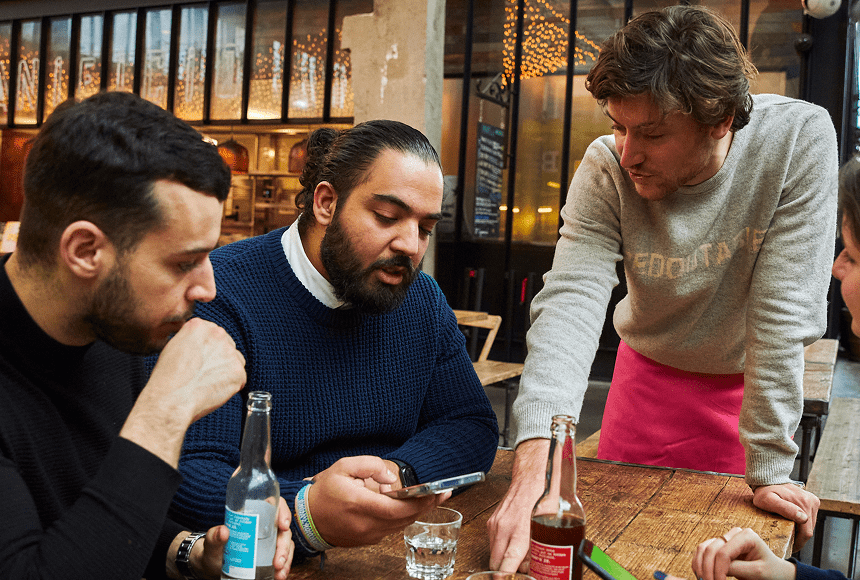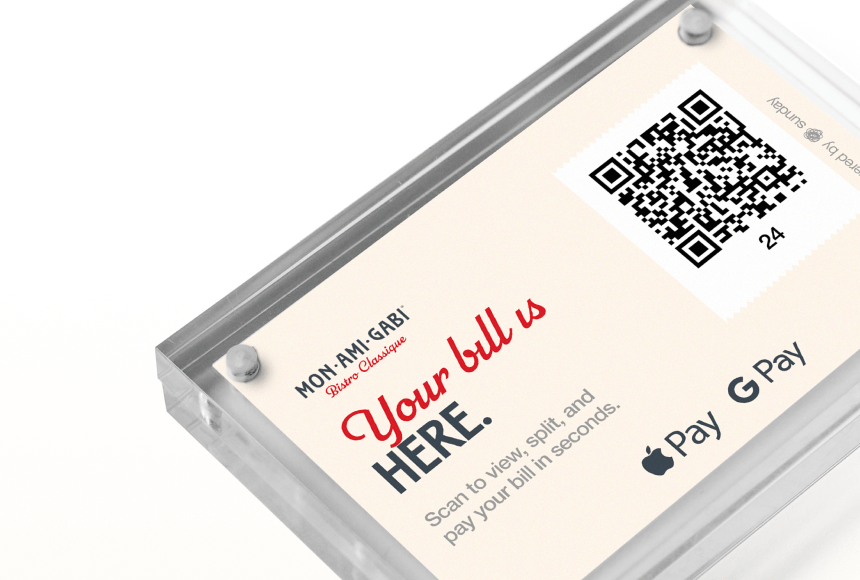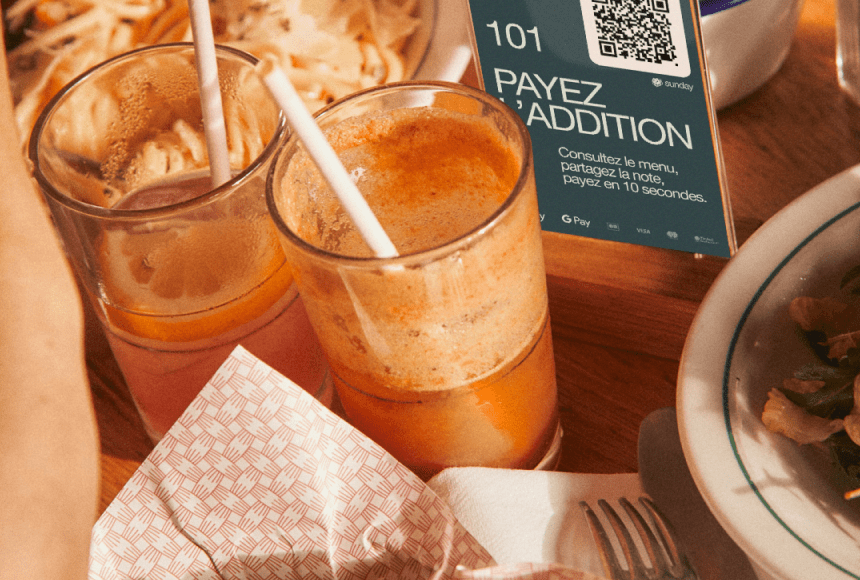
Accelerate Your Service and Boost Table Turnover with QR Code Payments
The Evolution of Payment Methods in Restaurants
Over the past two decades, the restaurant industry has witnessed an incredible transformation in the way guests interact with menus, place orders, and settle their bills. Gone are the days when a clunky credit card reader or a cash register dominated the dining room. Instead, new technologies like mobile point-of-sale (POS) systems and pay-at-table solutions have emerged, revolutionizing service in both fine dining and quick-service restaurants.
Now, QR code payments have taken center stage in North America, offering a convenient and speedy alternative that appeals to guests of all ages. Although QR codes gained recognition for contactless menus, they’re now widely used for payment processing, tipping, and even driving online reviews. In this article, we’ll explore why QR code payments can be a true game-changer for restaurant owners, how they expedite service, and how they can substantially increase table turnover.
Why Speed Matters: Serving More Guests with Fewer Delays
The restaurant world is built on meticulous timing. Every second you save in serving guests, clearing tables, and processing payments translates into real value for your business. According to the 2023 State of the Restaurant Industry report from the National Restaurant Association (source), many restaurants are prioritizing technology to stay competitive and meet evolving diner expectations.
Consider the following:
- Table turnover: A faster payment process allows you to seat new parties more quickly.
- Guest satisfaction: Diners appreciate not having to wait for a check or for a server to bring back their card.
- Labor cost optimization: When staff spend less time on each table, they can focus on providing a better overall experience to more guests.
Every extra minute a guest remains simply waiting for someone to bring them the check is a minute that could be spent serving the next party. By integrating QR code payments, you can significantly reduce or even eliminate these unwanted delays at the end of a meal, freeing up your servers and boosting table turnover.
What Exactly Are QR Code Payments?
While many of us are familiar with a quick link to a webpage by scanning a QR code, using one to pay for a meal is a more recent innovation in the U.S. restaurant industry. Here’s how it normally works:
- Unique QR code per table: Each table or receipt has a specific code that identifies a guest’s order.
- Scan with a smartphone: Guests use their phone camera (or a dedicated QR code app) to scan the code.
- View the bill: The link opens a secure page displaying the guest’s bill. The total is itemized, often including tax calculations for clarity.
- Choose a payment method: Guests select their preferred payment type—credit card, debit card, mobile wallet—and can even add a tip.
- Confirm and pay: Payment is processed through secure encryption technology, similar to any reputable online checkout experience.
- Optional feedback: Some systems also prompt diners to leave a review or quickly share their experience on Google, generating valuable social proof for your restaurant.
No swiping cards, no waiting for a server to return with the payment terminal—just a fast, streamlined, and contactless method.
Faster Service: The Secret Sauce to Thriving Restaurants
Quick service doesn’t just please your diners; it also helps your staff. Consider a busy Saturday evening: You have the front-of-house team juggling seatings, order-taking, refills, and processing multiple bills consecutively. By empowering guests to pay on their own, you remove one of the biggest bottlenecks in the traditional restaurant workflow.
Let’s highlight a hypothetical case study of “Chef Mario’s Bistro,” a neighborhood spot known for its homemade pasta and bustling dining room:
- Before QR codes: Servers spent several minutes per table returning with the bill, collecting payments, running or tapping cards, and bringing back receipts. Meanwhile, the line of waiting guests piled up.
- After QR codes: Diners scan, pay, and go. Servers immediately see which checks have been settled in their POS system, enabling them to cleared tables faster and greet new arrivals without the scramble.
With this shift, Chef Mario’s Bistro reports noticeably quicker table turnovers, which translates into improved revenue. In fact, industry data suggests that a 10% to 15% decrease in table turn time can boost overall profits by up to 20%. While figures vary for each location, the principle stands firm: faster, smoother transitions equal more guests served, more tips earned, and higher daily sales.
Google Reviews and Tipping: Two Big Wins for You and Your Team
Beyond speed, QR code-based systems can seamlessly integrate features that encourage diners to engage with your business once they’ve finished their meal. Two of the most significant opportunities here are tipping and online reviews.
Boosting Gratuities
When guests pay with a QR code, tipping options are often presented in a user-friendly digital interface. By showcasing suggested tip amounts (for instance, 15%, 20%, or 25%), you prime diners to leave a gratuity for stellar service. Curated digital prompts can increase tip averages by gently reminding diners how much their server contributed to making their meal memorable.
Notably, contactless tipping soared in popularity during the height of the pandemic, and it’s not slowing down. Many guests now actually prefer digital tipping, avoiding the awkwardness sometimes felt when writing in a tip line on a paper receipt. As a restaurant owner, you not only make it more convenient for guests, but you also reward your staff.
Inspiring Positive Reviews
Most QR payment solutions, like sunday, include a feature where diners can easily click and leave an online review—often popping up immediately after the payment confirmation. Getting more positive reviews on Google or Yelp increases your restaurant’s visibility, helps shape a positive online reputation, and encourages potential guests to give you a try.
Imagine the scenario again at Chef Mario’s Bistro: a couple scans the QR code to pay their check, they add a 20% tip, and then a message says: “Enjoyed your meal? Share your experience!” With a single tap, they head to Google and leave a glowing review. That entire process might take less than two minutes—and it often happens before they even leave the table.
Implementation Tips to Get Started Quickly
If you’re interested in adopting QR code payments, you might wonder: How complicated is the setup? The good news is that implementing a reliable QR code payment system can be relatively straightforward when partnering with a respected provider. Here are a few tips:
- Choose a reputable platform: Look for a solution known for security and seamless integration with your existing POS system. The provider should handle payment encryption, ensuring that your guests’ financial information is protected.
- Train your staff: Make sure your servers understand how the payment flow works, so they can confidently guide diners through the process if anyone seems hesitant.
- Update signage: Clearly display QR code instructions at tables or attach them to checks. Make it obvious so guests immediately notice and try it out.
- Encourage online reviews: Customize your payment page to encourage diners to leave feedback—enabling a smooth transition from “pay” to “review.”
- Monitor analytics: Your chosen QR system will likely come with usage metrics. Track your average checkout time, tipping percentages, and new guest feedback to see if the system is delivering results.
Overcoming Common Hurdles
While QR code payments offer clear advantages, it’s wise to anticipate and address typical obstacles you might encounter.
Guest Awareness
Some guests remain unfamiliar with QR code scanning—even though it became common for menus. While this demographic is shrinking, make sure your staff can quickly explain how to scan a code, or have a simple note on the table explaining “Open your camera, point it at the code, and tap the link.” A friendly approach goes a long way in demystifying new tech for your customers.
Internet Connectivity
Because QR code payments rely on the guest’s smartphone internet connection, it’s best to ensure you have strong Wi-Fi available or that the mobile data signal is reliable in your area. If your restaurant is in a Wi-Fi dead zone, this might impede the effectiveness of digital payments. Provide free guest Wi-Fi whenever possible to guarantee smooth transactions.
Security and Privacy
One of the most common questions from restaurateurs is whether scanning a QR code actually keeps transactions secure. Any reputable provider will use layered encryption methods to protect card data, just like any online payment gateway or card reader system. Be sure to partner with a company that follows industry best practices, including Payment Card Industry (PCI) compliance. You can share these safeguards with your diners if they raise concerns—transparency goes a long way in building trust.
Case Study: Chef Mario’s Bistro Revisited
We revisited Chef Mario’s Bistro a few months after implementing a QR code payment system to measure its impact more concretely. Here’s a bird’s-eye view of the improvements they experienced:
| Metric | Before QR | After QR |
|---|---|---|
| Average Payment Time | 9 minutes | 3 minutes |
| Daily Table Turnover | ~ 2.5 turns per table | ~ 3.2 turns per table |
| Average Tip Percentage | 18% | 20% |
| Monthly Google Reviews | 15 | 40 |
While these figures are just an example, they illustrate that quick implementation of QR code payments can have wide-ranging benefits. Speedier checkouts meant higher turnover and an overall increase in customer satisfaction—leading to more positive reviews. The incremental tip increase also helped retain top-tier staff. Thanks to word of mouth and positive online feedback, Chef Mario’s Bistro remains busy, stable, and poised for further expansion.
The Warm and Personal Touch Is Still Key
Sometimes, restaurant owners fear that using technology will create an impersonal or “cold” dining environment. However, the best QR code payment systems actually free up your servers to spend more time connecting with guests at the beginning and middle of their meal, rather than worrying about cards or checks at the end. That means more genuine smiles and meaningful interactions throughout the dining experience.
You’re responding to evolving customer habits, not replacing hospitality with automation. By simplifying the payment process, you allow your employees to deliver the warmth and personality that keeps guests coming back—like recommending wine pairings, describing dessert specials, or sharing the story behind a chef’s unique creation.
How sunday Enhances the Process
When it comes to adopting QR code payments and the added benefits of digital tipping and online reviews, sunday has emerged as a particularly user-friendly and comprehensive platform for restaurant owners. With sunday, it’s possible to:
- Customize your payment flow and tipping prompts
- Offer a contactless experience that syncs seamlessly with major POS systems
- Encourage and facilitate immediate feedback on Google
- Access real-time insights into customer behavior
Perhaps most importantly, sunday was built with the restaurant industry’s unique demands in mind. This can result in a smooth implementation that doesn’t require endless training sessions or complicated integrations. Instead, you can gear up fast and see immediate improvements in table turnover and overall customer experience.
Preparing Your Restaurant for the Future
It’s often said that the only constant in the hospitality world is change. Today’s diners expect convenience, rapid service, and an effortless experience at every step of their journey—especially when it comes to payment. From fast-casual spots to top-tier steakhouses, QR code payments are popping up across the spectrum, proving that digital transformation is no longer a luxury but a necessity. Embracing the shift now sets you up for future success.
In addition, younger generations have grown up in a world where technology permeates every daily task. As Gen Z and Millennials become the dominant consumer groups, they’re more likely to favor businesses that cater to their digital expectations. QR codes fit right into that ecosystem, offering a frictionless checkout that is second nature to these guests.
Tips on Promoting Awareness Among Diners
If you’re integrating QR code payment options, make sure to market this new experience effectively. Here are a few ways to spread the word:
- Social Media Teasers: Post a short video or infographic on your restaurant’s Instagram highlights on how easy it is to pay via QR code.
- Signs and Table Tents: Place small stand-up displays on each table explaining that guests can “Pay, Tip & Review” all from their phone.
- Server Recommendations: Train staff to mention it at the beginning or midway through the meal: “Whenever you’re ready, feel free to scan the QR code for a quick checkout. Let me know if you have any questions!”
- Email Newsletter: If you have a mailing list, let customers know they can skip waiting for the check. This is especially appealing to busy lunch crowds.
Remember, change can be intimidating. A warm, helpful tone in your marketing and staff interactions will ensure guests see QR code payments for what they are: a convenient, modern upgrade to the dining experience.
A Quick Word on Costs
Some restaurant operators might worry about potential fees associated with QR code payment solutions. The truth is, payment processing fees vary—just as conventional card transactions do. Your costs will depend on your negotiated rates with the payment provider. Typically, fees for QR code transactions fall into a standard range similar to those charged for in-person credit card payments.
In many cases, these modest fees are more than offset by the improvements in table turnover, increased volume, higher average checks, or boosted tips that come from happy customers. When you run the numbers, you may find the ROI is well worth any additional expense, especially once your servers spend less time transacting and more time upselling or engaging guests.
FAQ: Answers to Common Questions
Is QR code payment secure?
Yes. Reputable providers use the same encryption measures as any secure online payment platform. Make sure your provider is PCI compliant and uses tokenization to protect sensitive card data.
How do I train my staff for QR code payments?
Start with a quick demonstration: Show your team how to scan the code, select a tip, and complete a transaction. Provide troubleshooting tips for guests who may be unfamiliar with scanning codes. Clear, hands-on guidance ensures your staff feels confident.
Do customers need a special app to pay with a QR code?
In most cases, no. Modern smartphone cameras can read QR codes directly in camera mode. The guest simply points their camera at the code, taps the link, and is redirected to a secure payment page. If a customer’s phone doesn’t automatically scan QR codes, they can install a free QR scanner app.
What if a guest prefers a traditional payment terminal?
You can always keep your existing POS terminal or credit card reader on hand. Offering multiple options accommodates diners of all tech comfort levels, ensuring no guest feels left out or forced into a method they dislike.
Will I lose personal interaction with my guests by switching to QR codes?
On the contrary, many restaurants report that servers have more time for personalized service—like discussing menu items and sharing hospitality—because they spend less time running back and forth to complete payments. The payment process becomes streamlined, and servers can focus on good old-fashioned hospitality.
Ready to Transform Your Payment Experience?
Adopting QR code payments may feel like a big step. However, once you see the efficiency gains, the heightened guest satisfaction, and the potential for increased revenue, it becomes clear why so many restaurant operators are jumping on board. By removing friction from the checkout process, boosting tips, and nudging guests to leave those all-important Google reviews, you create a virtuous cycle of positive dining experiences and fresh foot traffic.
Ultimately, restaurants thrive when they deliver convenience, warmth, and reliability in one seamless package. A side of technology doesn’t replace genuine hospitality—it simply speeds up service and opens new avenues for delighting your customers. From the corner diner to the high-end boutique eatery, QR code payments can be a benevolent catalyst for growth and efficiency. By embracing this approach, you’ll stay agile in an ever-evolving industry and ensure guests keep coming back for more.
Find out more today
Drop us your details below and we’ll reach out within the next 24h
“Check please” is a thing of the past.
With our integrated QR codes your customers pay in seconds, straight from their table.




